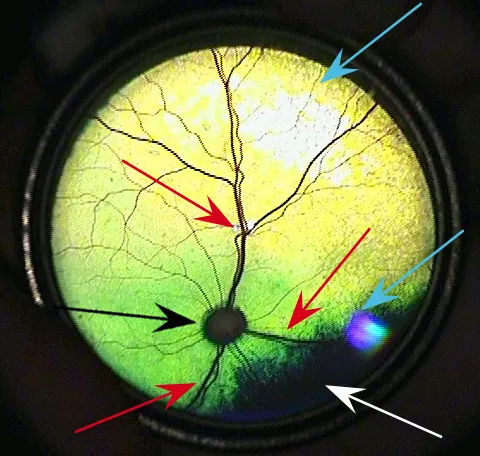This response is correct!
Image Gallery: Feline Fundus Diseases
DJ Haeussler, Jr, DVM, MS, DACVO, The Animal Eye Institute, Cincinnati, Ohio
Fundic examination should be part of all physical examinations (ie, performed on every patient presented for routine checkup). Abnormalities that can affect the fundus of a cat include inherited disease, acquired disease, infectious disease, manifestations of systemic disease, and congenital abnormalities. When examining the feline fundus, clinicians may also appreciate variations of normal anatomy. The more often a practitioner examines the fundus of feline patients, the more comfortable he or she will become identifying normal variants versus abnormalities.

FIGURE 1
Normal feline fundus. Typical appearance of the holangiotic pattern of the feline fundus in an 8-year-old castrated domestic short-haired cat. The retinal vasculature has three pairs of cilioretinal arteries (red arrows). The nontapetum is also present at the inferior aspect of the fundus (white arrow) and is usually very dark brown. The optic nerve (black arrow) is typically located in the tapetum, is nonmyelinated, and is gray to dark gray.1 Flash artifacts are present in both the superior and inferior aspects of the image (blue arrows).